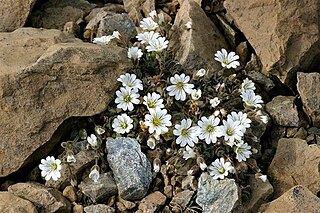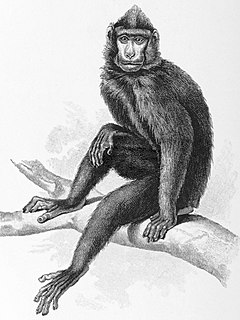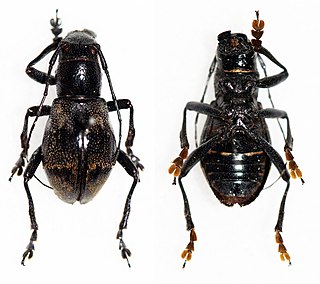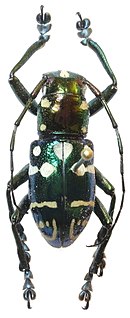
Centropomus is a genus of predominantly marine fish comprising the family Centropomidae The type species is Centropomus undecimalis, the common snook. Commonly known as snooks or róbalos, the Centropomus species are native to tropical and subtropical waters of the western Atlantic and eastern Pacific Oceans.

Cerastium nigrescens, commonly known as the Shetland mouse-ear, Shetland mouse-eared chickweed or Edmondston's chickweed, is an endemic plant found in Shetland, Scotland.
The American Elm cultivar Ulmus americana 'Nigricans' was cloned from a selection made from seedlings raised by the Zöschener Baumschule, Germany, at the end of the 19th century.
The elm cultivar Ulmus 'Nigrescens' was identified by Pynaert as Ulmus campestris betulaefolia nigrescens. Considered by Green to be "probably Ulmus carpinifolia , but said to have been raised from seed of Purpurea".

The dark sheath-tailed bat is a species of sac-winged bat in the family Emballonuridae. It is the only species in the genus Mosia.

The Gorontalo macaque or Dumoga-bone macaque is a species of primate in the family Cercopithecidae. It is endemic to the island of Sulawesi in Indonesia.

The blackish small-eared shrew is a species of shrew in the family Soricidae. It is found in parts of Costa Rica, El Salvador, Guatemala, Honduras, Mexico, and Panama. An example specific habitat is the Petenes mangroves of the Yucatán.

The Himalayan shrew is found in Bhutan, China, India, Myanmar, and Nepal, is currently the only species in the genus Soriculus within the tribe Nectogalini, although the species Chodsigoa and Episoriculus, which occur in southeastern Asia, as well as those of the fossil European genus Asoriculus, were formerly included there.

The swift fruit bat is a species of megabat in the family Pteropodidae.
A xerophile is an extremophilic organism that can grow and reproduce in conditions with a low availability of water, also known as water activity. Water activity (aw) is measured as the humidity above a substance relative to the humidity above pure water. Xerophiles are "xerotolerant", meaning tolerant of dry conditions. They can often survive in environments with water activity below 0.8; above which is typical for most life on Earth. Typically xerotolerance is used with respect to matric drying, where a substance has a low water concentration. These environments include arid desert soils. The term osmotolerance is typically applied to organisms that can grow in solutions with high solute concentrations, such as halophiles.

The knobthorn is a deciduous African tree, growing up to 18 m tall, that is found in savanna regions from West Africa to South Africa. The tree is resistant to drought, not resistant to frost and its hard wood is resistant to termites. Giraffes often browse on the flowers and foliage of this tree, while the seed pods and foliage are browsed on by a range of mammals, including elephants.

Aprophata is a genus of longhorn beetles of the subfamily Lamiinae, containing the following species:
The elm cultivar Ulmus 'Betulaefolia Nigrescens', the Black Birch-leaved Elm, reportedly a seedling of a purplish-leaved elm, was first described by Pynaert in 1879 as U. campestris betulaefolia nigrescens. An U. campestris betulaefolia nigrescensHort. was distributed by the Späth nursery, Berlin, in the 1890s and early 1900s.
Aprophata aurorana is a species of beetle in the family Cerambycidae. It was described by Vives in 2009. It is known from the Philippines.

Aprophata eximia is a species of beetle in the family Cerambycidae. It was described by Newman in 1842, originally under the genus Abryna. It is known from the Philippines.

Aprophata eximioides is a species of beetle in the family Cerambycidae. It was described by Stephan von Breuning in 1961. It is known from the Philippines.

Aprophata notha is a species of beetle in the family Cerambycidae. It was described by Newman in 1842, originally under the genus Abryna. It is known from the Philippines.

Aprophata ruficollis is a species of beetle in the family Cerambycidae. It was described by Heller in 1916. It is known from the Philippines.

Aprophata semperi is a species of beetle in the family Cerambycidae. It was described by John O. Westwood in 1863. It is known from the Philippines.
Aprophata vigintiquatuormaculata is a species of beetle in the family Cerambycidae. It was described by Bernhard Schwarzer in 1931. It is known from the Philippines.












